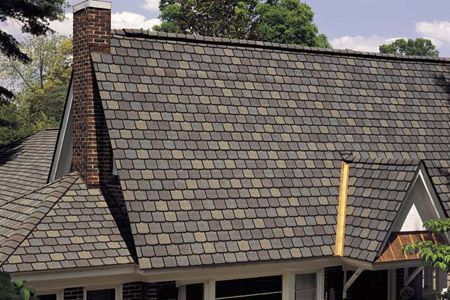As wildfires become increasingly common, fire-resistant roofing and siding have evolved from luxury to necessity for many homeowners. These materials improve your home’s ability to withstand high temperatures and help slow the spread of flames. In this comprehensive guide, we’ll explorethe top fire-resistant options for both roofing and siding to help you choose the best materials for your home.
Fiberglass-Based Fire Resistant Asphalt Shingles
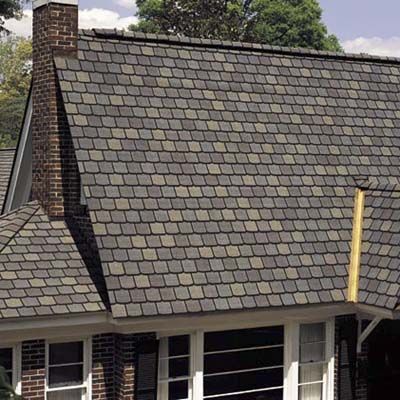
Fiberglass-based asphalt shingles are the most popular roofing material in the United States, accounting for 80% of the residential roofing market. It isn’t hard to see why. Fiberglass shingles are both affordable and durable. As long as they are installed with a code-compliant underlayment, fiberglass shingles provide excellent fire resistance. They can be installed in various weather conditions, and they come in a wide range of colors and styles.
CertainTeed’s Highland Slate shingles offer the best of both worlds: the cost-effectiveness of asphalt and the luxurious appearance of natural slate. They also have a Class A fire rating and can withstand winds up to 110 mph.
Fire Resistant Recycled-Rubber Tiles
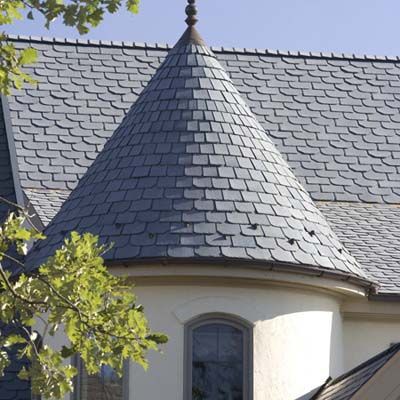
Recycled-rubber tiles like EcoStar’s Majestic Slate tiles are an excellent choice for environmentally conscious homeowners. Made with a highly effective fire retardant and installed over a fire-resistant barrier, these tiles have earned a Class C fire rating and Class 4 impact rating from UL.
Superior fire resistance isn’t the only benefit of this material. Like CertainTeed’s Highland Slate shingles, these particular tiles are designed to mimic the look of slate. They are made from 80% recycled rubber and plastic—which means they are exceptionally durable, low maintenance, and eco-friendly. They are much lighter than slate, easier to install, and available in 11 different colors.
Fire Resistant Metal Tiles

Metal tiles are lightweight and low-maintenance, but most impressively, they’re noncombustible. When combined with a fire-resistant underlayment, many metal roofing systems can achieve a Class A fire rating. High-quality metal tiles are often coated with UV-resistant materials that reflect heat and resist abrasion. Many manufacturers also offer long-term warranties that range from 30 to 50 years.
With minimal upkeep, homeowners can enjoy safety, beauty, and cost-savings over the lifespan of the metal tiles. Metal tiles are highly effective at reflecting sunlight, which can help in reducing energy costs. Their sleek and modern appearance can enhance the aesthetic value of a home, making them an excellent choice for contemporary designs.
Fire Resistant Clay Tiles
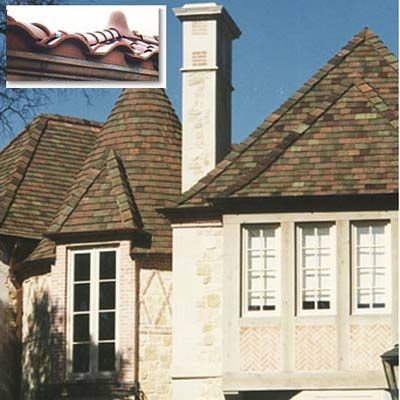
Traditional clay tiles are both durable and noncombustible, making them an excellent choice for fire-prone areas. There’s only one small caveat: If you choose a barrel-shaped variety, you must seal any openings, especially over the eaves. Otherwise, flying embers could penetrate the roof.
Clay tiles provide superior insulation, which can help in maintaining indoor temperature. Their ability to withstand various weather conditions while maintaining structural integrity adds to their appeal. Plus, the natural look of clay tiles can complement a wide range of architectural styles.
Fire Resistant Slate
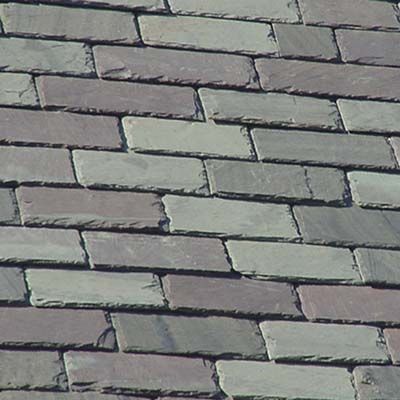
Slate is often considered the pinnacle of roofing materials thanks to its unique combination of elegance, longevity, and excellent fire resistance. As a noncombustible material, it naturally receives a Class A fire rating. High-quality slate, such as the S1 grade offered by Evergreen Slate Company, is rated to last 75 years or more. It requires minimal maintenance and can withstand extreme weather conditions without cracking or fading.
Slate roofs do come with two major drawbacks: their cost and their weight. Slate is one of the heaviest roofing materials, weighing between 700 to 3,000 pounds per square, and not every roof can support the extra weight. It’s also one of the most expensive materials—though the extended lifespan and durability of slate roofing justify the expense for many homeowners.
Fire Resistant Stone Veneer

The fire resistance of Natural Stone Veneer International’s fieldstone veneer is amplified when applied over masonry-block or ICF framing instead of untreated wood. To maximize the stone’s fire-resistant properties, use a fire-rated mortar and perform regular maintenance to prevent cracks.
The natural appearance of stone veneer can significantly boost a home’s curb appeal. Homeowners also appreciate its durability and resistance to pests. Regular maintenance helps the veneer remain intact and effectively fire-resistant throughout its lifespan.
Fire Resistant Fiber Cement
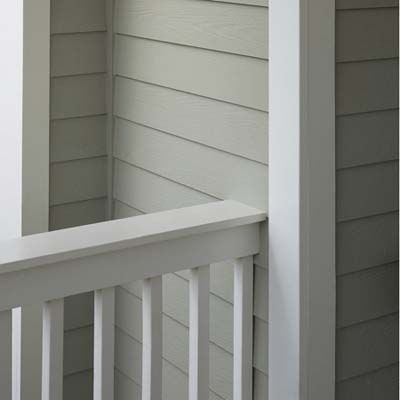
Made from a mixture of Portland cement, sand, and wood fibers, fiber cement products usually carry a Class A fire rating. This means they can withstand high heat for 2 to 4 hours before your home’s structure starts to fail. Fiber cement siding also offers significant durability against weather and insects, and it’s available in various styles and colors for easy customization. Some fiber cement products are even designed to mimic the appearance of real wood.
To maximize their effectiveness, fiber cement products often require a gypsum-board underlayment. It’s also important to enclose eaves, soffits, and fascias with the complementary fire-retardant trim to prevent embers from entering through cracks or other flammable surfaces.
Exterior Insulation Finish Systems
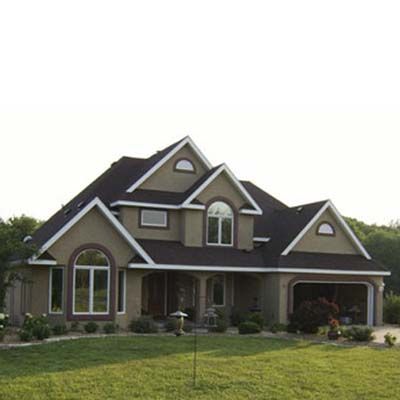
Exterior Insulation Finish Systems (EIFS) provide a stucco-like appearance with added insulation benefits. These systems consist of an acrylic-impregnated cement finish applied over fiberglass lath, with a foam insulation layer on the back to prevent cracking. While EIFS products like Dryvit don’t have a specific fire rating due to their tendency to fall off when exposed to high heat, they won’t compromise the fire resistance of the underlying wall system.
The insulation properties of EIFS also contribute to energy efficiency by reducing heat loss or gain, which can lead to lower utility bills. This combination of fire resistance and energy efficiency makes EIFS a practical choice for homeowners who want to save money and protect their homes.
Fire Resistant Treated Wood
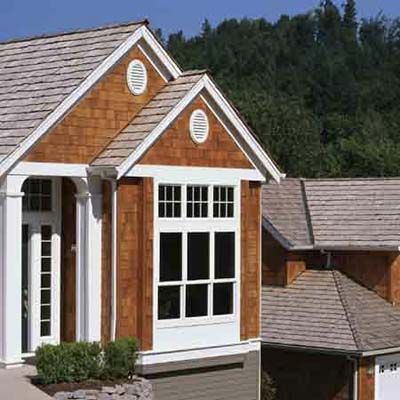
For homeowners who prefer the look of natural wood, some companies offer clapboards and shingles treated with UL-approved fire-retardant chemicals. Treated wood siding from companies like Watkin Sawmills combines the traditional look and charm of natural wood with an added layer of fire protection.
It’s important to note that the fire-retardent chemicals used in these products will leach out over time. As a result, the wood must be retreated regularly to retain its fire-resistant properties.
Fire Resistant Masonry
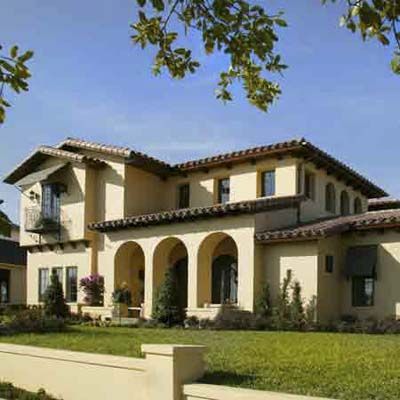
The classic appearance of brick and stucco can enhance a home’s aesthetic appeal while providing robust fire resistance. Though these materials tend to be more expensive, they are also naturally fire-resistant and offer decades of protection when properly installed and maintained. Masonry materials are also durable and relatively low maintenance.
Depending on the thickness, masonry siding can meet or exceed one-hour fire ratings. To slow heat transfer from the siding to the framing even more, add a layer of gypsum underneath—which contains 22% chemically combined water.
Our Conclusion
Consider your budget, local climate, and architectural style when selecting the best fire-resistant materials for your home. While options like fiberglass-based asphalt shingles and fiber cement offer affordable fire protection, premium materials such as slate and clay tiles provide superior durability and aesthetics. Understanding each material’s unique characteristics and benefits can help you make an informed decision.
